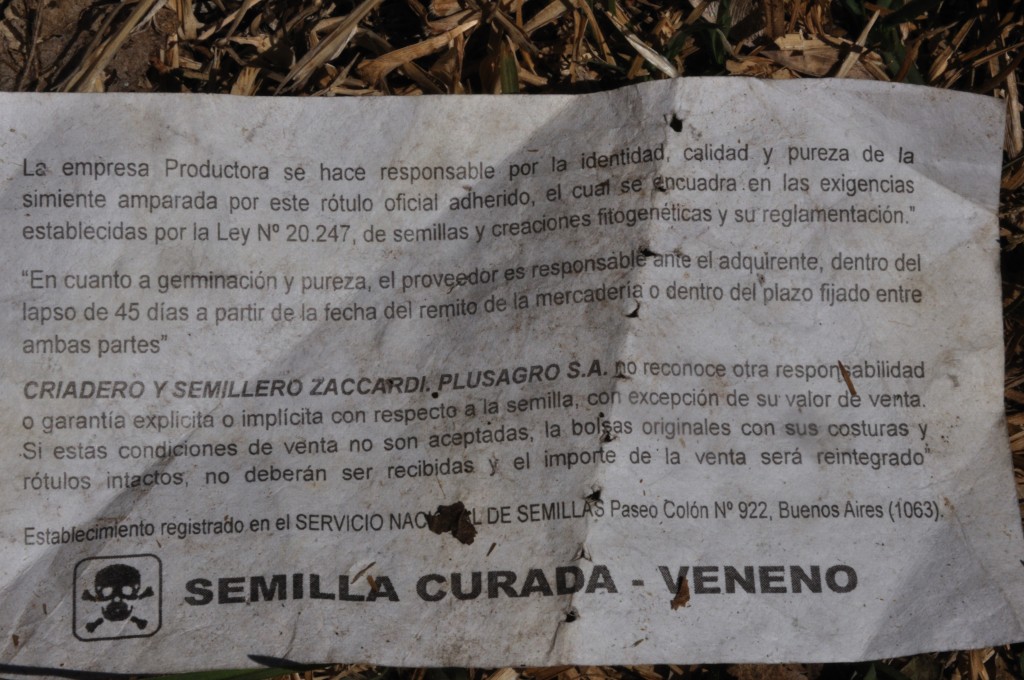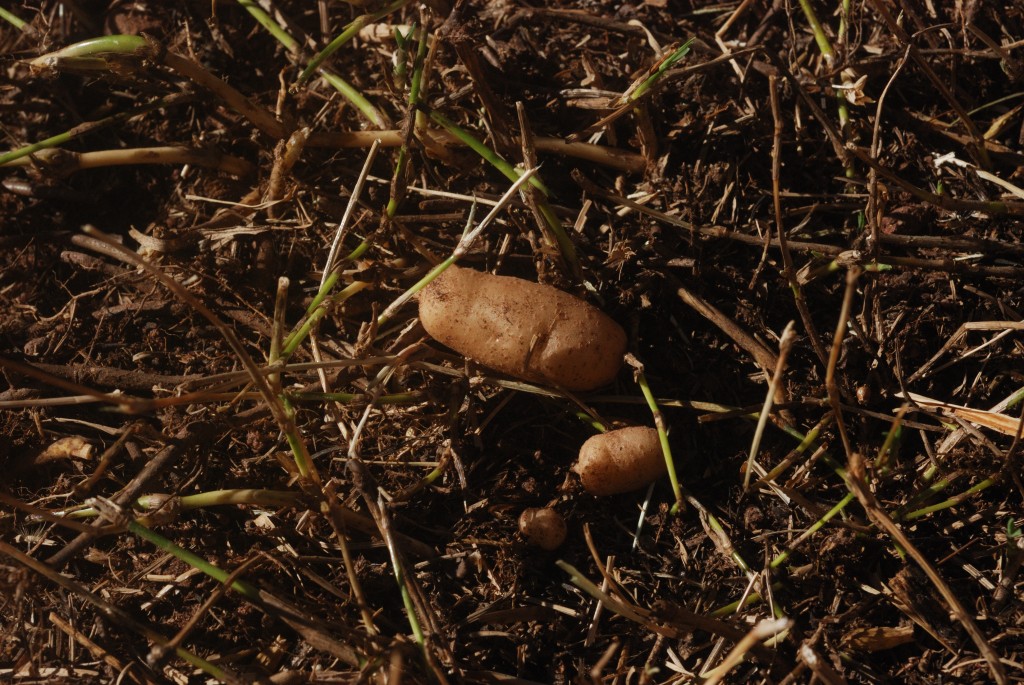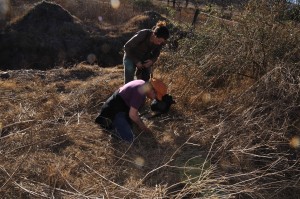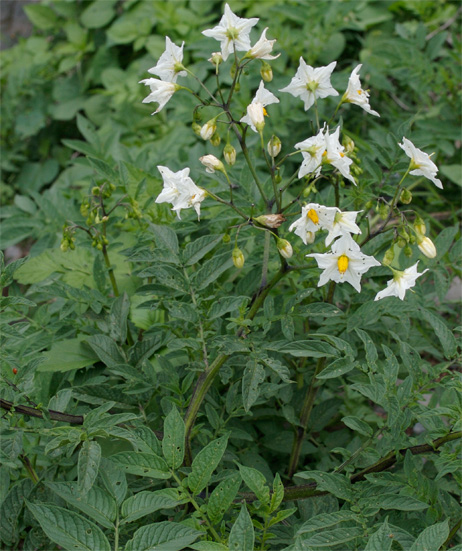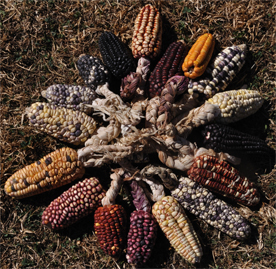"In 2015, no more chemicals, fertilizer, pesticide and herbicide in agriculture…"
January 25th, 2010This announcement is not custom paper writing service from me… It is from Terrena, the biggest agro coop in France, one of the most important customer of agro chemical products in the world today…
It seems that after trying to produce always more with higher bills for chemicals, prepared seeds and big consumming tractors…
higher yields were hiding higher inputs, smaller profit margins. It is without counting with the good sens of the peasant, which seems to come back galopping for 2010.
A true hope for the evolution of food security and development…
Surprisingly, the principle of the trials we developed as a sustainable alternativ to corn cultivation in Argentina, Marocco and Ethiopia, has just been validated by 2 authorities : the Rothamsted Research lab pour for agriculture, a world reference, inventor of some of the most reputed pesticides an herbicides used everyday on this planet, and the French Goliath of agriculture the agro-coop Terrena.
What protocoles are we talking about? To plant a community of plants, mycelium and bacterias at the same time as the staple crop. These plants will allow the crops to get all the fertilizer needed, while displaying all kind of strategies to protect from pests and hydric stress which are getting worse with global warming. A direct seedling of corn together with a broadcast sowing of legumes and graminea, no tilling, 10 days before harvesting the crop in place, which will then create a mulch which will be inoculated by good fungi and bacteria, to be controlled by specific prebiotic crops. A folly when we think about granpa’s agriculture, which surrounds us everywhere; but you need to try to be convinced once for all.
The first authority to bring water to our mill, are the brilliant Cambridge professors and the scientists of the Rothamsted Lab, by saying that from now on we need to be inspired by nature, to keep into account plant sociology their complementarities in bringing fertilizers and fighting against pests. In doing so they have double, even in some places multiplied by six their crops during trials they made in Kenya, in the past six months.
The second, came from the coop Terrena they declared in their annual report : ” 2015, is the objective when we wont need fertilizer, pesticide, nor herbicide” … “we will fight against plant diseases with bio-control by using natural mechanisms, the bio-control will also allow us to fight efficiently against pests as well.” and further “by using plants, microbiology, tree hedges, Fragmented Rameal wood (BRF) and funghi…”
Never enough, what a great report the one of Terrena. A good start for 2010.
You could almost hear the applauses of 400 million years of evolution an mutual living of plants, before our intervention with pesticides and herbicides, in the last 40 years.
But now let me think : hopefully Copenhaguen was a flop… three cheers for Copenhaguen.
Cheer witticism of course. But just imagine if Copenhaguen did not failed. Among all announced measures, huge sums of money would have been given to Africa to repeat the same pattern of Agriculture in place in Europe, USA and Japan, for the last two generations. A true catastrophy : responsible for 30% of greenhouse gases in the world ; to repeat this at the scale of the planet would have been a disaster causing a global famine.
Copenhaguen has succeeded though, because of the mediatic enthousiasm it has provoked in the heads of many scientists, who got the guts to make public different prospects. And it is difficult for a scientist to say this in public. Have you ever heard about a worm, a bacteria or a funghi, financing a research unit in a University?
Our leaders are not aware of the existence of such protocoles, nobody has told them about.
A doctorate thesis has just been propsed to the INRA (French National Institute for Agronomic Research) about sowing different complementary plants in a corn field. Does not seem to be accepted yet. Lets’ hope that the INRA unit of Angers in France will support this. We will see what 2010 will bring. All our hopes are with them.
This has been known for a long time now, but hasn’t been realy accepted by the agriculture authorities. Do you imagine today’s agriculture with no chemicals? Less heavy tractors and devices, less commerce for the cooperatives, the unions, less debt for the peasant, less investments for the agriculture finance authorities and banks…
The economic pattern en vogue is today rather on the side of Jacques Attali, advisor to the French President Sarkosy, former advisor to President Mitterrand : “We have not authorised for the time being, the use of GMOs. The products which are used to feed animals are becoming increasingly costly; so we will have to take a decision : will we accept GMOs, like everybody does in the world, or are ready to support the massive increase of the cost of our food?”
Is Mr Attali ignoring that while he is speaking, France is already number one importer of Brasilian transgenic soy to feed its’ cows? He is probably unaware of this article in Time Magazin which shows that if you decide to raise your cattle with grass you can save the planet? Lets’ repeat it once more: a cow eats grass, not corn, nor soy. A recurrent theme in this blog.
Mr. Jacques Attali, for me, is “Mr. tractor” : Wherever he goes, he preaches the distribution of tractors to everybody… Now we know that these tractors will be able to spray herbicides for which American GMO seeds have been designed to resist, “like everybody does in the world”, Oups… dont forget that the French are number 3 in the GMO race, but so small in volume in comparison.
When you think about it, it seems so incredible to have succeeded in convincing the peasant good sense, to spray herbicides, which kill plants, in order to get a better harvest of plant. People who have done this are geniuses of commerce, arent they? Bravo.
70% of GM crops have been modifies to resist to these herbicides; so to sell always more herbicide.
The remaining has been created in order to integrate the Bacillus of Thuringis BT, a micro organism which kils coleopteras, i.e. beetles. But the beetle can evolve (remember Darwin?) and become resistant to BT. It is a bit what happened in India where since 2006 more than 200 000 peasants took on a credit to by BT seeds. The crops could not be harvested, destroyed by pest and diseases. 200 000 peasants committed suicide.
Bees now… in France, in the UK, Spain, or Marocco, 2/3 of the bee population in 2003 have disappeared in the 3 last years. People pointed on the new pesticides just put into action at this time; fair enough a pesticide is designed to kill insects, isn’t it? In France the INRA, our national watchdog, doute encorestill emits doubts. Through the French Association for Scientific Information and its’ Jan-March 2010 issue “Sciences and fake Sciences”, the doubt is maintained onthe role of insecticides to kill bee (bees are insects, remember). The solution proposed? BT GMOs, but Mr. scientist for agriculture, if the peasants commit suicide, will there be any agriculture left?
Potatoe : January 2010 Leeds University ask for the authorisation to plant GM potatoe in a Yorkshire field. They have modified a potatoe to resist to nematods, microscopic worms which have been living in the environment of potatoes for millions of years.
When you plant in the same space different cultivars of potatoes, if ever attacked a potatoe immediatly announces it to the others, which immediatly provoque an invasion of microorganisms which in turn eradicate the problem and feed on the nematodes. If you still have potatoes infested by nematodes today, it is more because of the way potatoes are cultivated. If ever you modifie them, you risk to take away the memory of how they can defend itself, which has been acquired by million of years of evolution. What is the point? These scientists dream that they will get a lot of money by selling to everybody in England their seed… Dont they remember the Irish famine was caused by the cultivation of one single type potatoe which has not been able to resist a mushroom, because it had forgotten about its existence?
This is grave. They are playing with the food security of millions of people. And now I take my cap of co-creator of the project “t’ikapapa” in Peru, together with A&L biodiversidad in Lima. “T’ikka papa” means “potato flower” in quechua. This project brought back the importance of the biodiversity of potatoe. How important it is to cultivate 320 varieties of potatoes at least, while securing to 8000 small farmers in the Andes the distribution in the Wong supermarkets, i.e. where the Peruvian elites are shopping and where they are ready to give a fair price to an extraordinary potatoe, to a true jewel. Our project won the 2006 FAO Gold medal (Food and Agriculture Organisation), the 2007 SEED AWARD from the United Nations and the BBC WORLD CHALLENGE FOR DEVELOPMENT 2007.
In the Andes, the wild potatoe grows among tagetes, the plant tagetes minuta, the common marigold, the anti nematode plant. Here you can see a wild potatoe in its original biotope, where we just took away dry tagets to take the photo. You find it right on the surface of the soil or beneath no more than 5cm. The tagetes essential oil avoid the development of these micro worms and provoques the presence of their predators.
It is simple. In the Andes, when you are on a terrain propitius to wild potatoe, a sandy soil close to a river, which is covered with dryed tagetes minuta, you bend to the soil and scrape it gently, potatoes are generally there. To be sure you’d better check previously in summer if you see any of the beutiful potatoe flowers in the area.
This is the original home of the potatoe. Tagetes minuta and potatoe have sealed a millenary deal. The student of Leeds University, are still trying to fput on it a foreign gene… A little trip on the field would have the best effect on them because the solution of their problem already exists.
It is a bit like inventing the thread to cut the butter. A shame to spend tax money on this. The response of the Soil Association, the British Environmental association, on the BBC was a bit similar to this.
But the British government has annonced last July 19 that it will send a 100 million pounds aid to Africa, in GMO seeds just after Bono’s big RED campaign to save Africa from poverty and Aids… In France, what are doing our ecologist ? To cite one very exposed by the media : to compensate our carbone Yann Arthus Bertran’s Foundation Action Carbone is panting 200 hectares of eucalyptus in Chili on Mapuche land, while he condemns in his film HOME the destructive effect of eucalyptus plantations. Further in his site he tells how he is learning to farmers in India how to till the ground and dig in it the remaining ashes from their cooking; the best way to diminish India’s staple crops and create famine.
Remember : the soil is alive, it is a living being. To much ash dug in the soil will transform itself into fossile carbon, uneatable by the bacterias which are the living beings of the soil. Little by little the excess of carbon will kill them and the soil will be unable to perform the exchanges of water and nutrients. It will become a desert little by little. The first sign of this transformation is the appearance of the tansy, tanacetum vulgare, which is the plant indicating the excesses of fossile carbon and the evolution of soil in that case, is towards a desert. I particularly say this to my Indian friends who are still used to, as in many other places in the world, burn their field before working on them. 10 000 years ago this is what the aborigenes in Australia have started to do. At this time the center of Australia was a lake. Today it is a desert.
So finally it is a good thing that Copenhaguen did not succeed, because we are not ready foe it.
Just give an eye to the last Agricultural Fair in Kabul this year, amazing no?
The lack of money in Africa will provoque more thinking before acting. With less money, perhaps one wil turn more on botanic, plant sociology, cell microbiology, micology… all these sciences which are openning our eyes to nature and are helping us to understand how we can get better chances to feed the planet. So better wait for Copenhaguen 2015?
But in the meantime we need to act and multiply the good results to prove the interests of these research : the next projects of the SOS SOiL team are in Marocco and Ethiopia. It has been question of forming the peasants at the boarder of Afghanistan and Pakistan… but for reasons of security will better pursue this task on internet.
Perhaps if Copenhaguen would have passed, sufficient credits would have been allocated to plant GM crops also there, thereby stopping all our effort to develop intensive crops with a better understanding of nature’s richness. Like UK’s foreign office who offered 100million pounds to test GMO crops in Africa which are forbidden in Europe.
